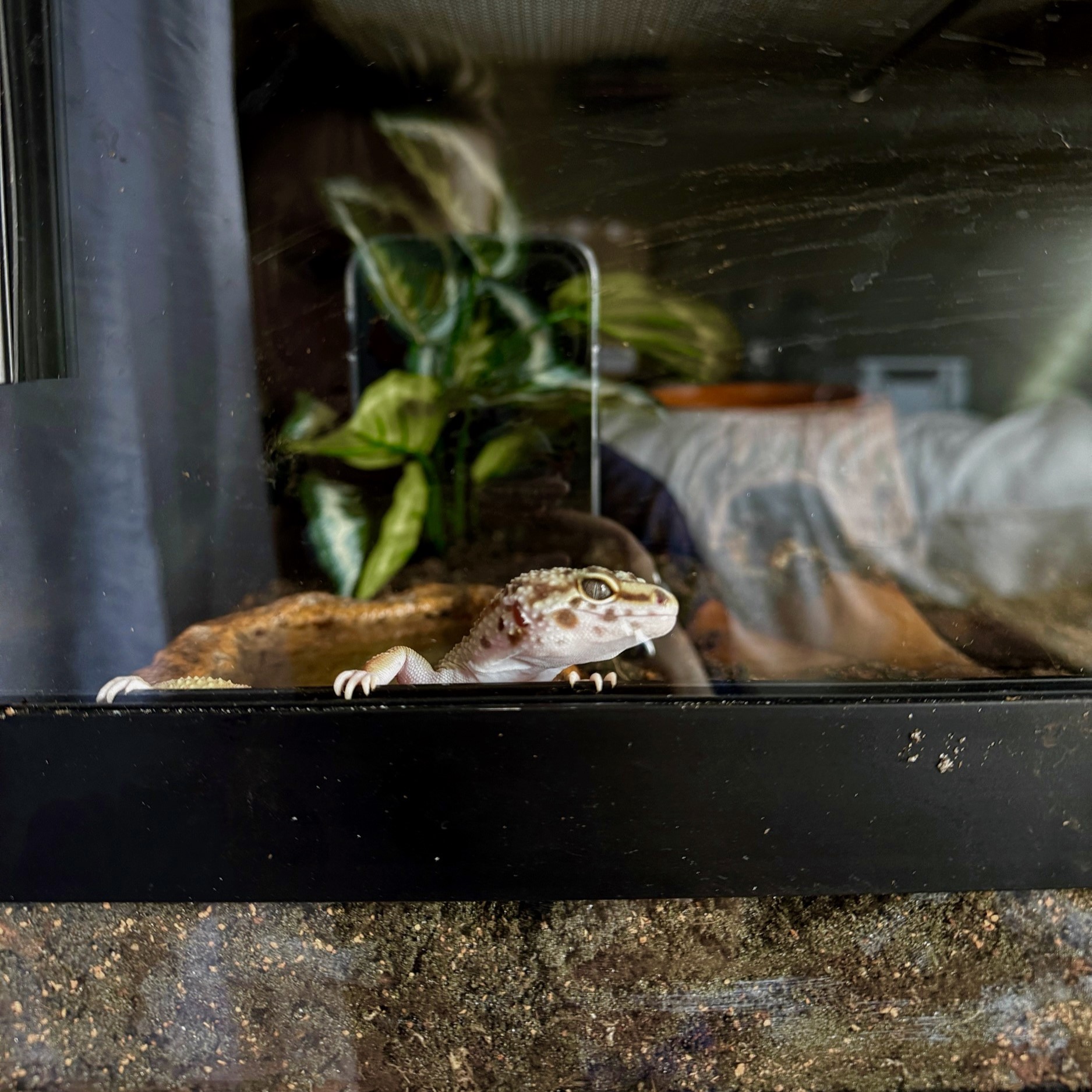Leopard geckos are near and dear to my heart as one of my favorite reptiles to own. They are charming, beginner-friendly reptiles with many different morphs. They love to hang out in dry, rocky places. One of their cool tricks is that they can regrow their tails if they lose them. Pretty amazing, right? Learn more about caring for these amazing lizards below!
Habitat & Husbandry
Enclosure: Although leopard geckos are relatively small reptiles, they still need an enclosure they can explore. A 20-gallon long is considered the bare minimum, but many would argue a 40-gallon enclosure is the smallest they should be housed in. Bigger is always better, so I keep my gecko Éowyn in a 40-gallon. If you can, you should too!
Substrate: Whether to provide substrate for your leopard gecko can be controversial, but I recommend providing it for a more naturalistic environment. Leopard geckos enjoy digging! However, it can cause impaction, so it is important to only put a healthy gecko in an enclosure with a substrate. I recommend a mix of 70% organic topsoil and 30% play sand, but please do adequate research when choosing a substrate for your little friend.
Temperature: Leopard geckos need a warm hide and a cool hide where they can go to escape the heat if they so choose. Their warm hide temperature should be around 90 degrees, while their cool side should range from 70-77 degrees. Turn off the heat at night for a drop in temperature (they can tolerate down to 60 degrees).
Humidity: The good news is that you won’t have to mist the enclosure too often! Leopard geckos like their environment dry, meaning low humidity. Humidity levels should range from 30-40%. However, they need a humid hide for shedding. Place this hide on the cool end of the enclosure, add some moistened substrate or moss, make sure humidity is 70-80%, and you are good to go.
Lighting: Leopard geckos are crepuscular, meaning they are most active at sunrise and sunset. You may find differing opinions on the topic of UVB, but I wholeheartedly believe they need UVB lighting for 12 hours a day. Zoo Med ReptiSun T5 HO 5.0 is my preferred UVB bulb for my girl.
Feeding & Supplements
Diet: Feed your gecko a variety of insects such as crickets, dubia roaches, and mealworms. Although you can feed them other things, I recommend rotating through these healthy options.
Feeding Schedule: Juveniles should be fed daily to every other day, while adult geckos should be fed a couple of times a week.
Supplements: Dust your leopard gecko’s food with calcium at every feeding. Whether you dust with or without D3 will depend on whether you decide to use a UVB light. If you go that route, always dust without D3. If you dust with D3 while also having UVB, it could lead to an overdose. Dust every week with a multivitamin to keep them as healthy as possible.
Health & Maintenance
Cleaning: Spot clean the enclosure daily and do a full substrate change every 3-4 months. This is if you are not setting up your gecko’s enclosure bioactively.You can learn how to set up your enclosure bioactively here!
Health Issues: As with any animal, watch for signs of illness such as lethargy, loss of appetite, or skin abnormalities. Consult a vet experienced with reptiles if needed.
Enrichment & Handling
Hiding Spots: Provide plenty of hiding spots using logs, plants, and hides. They will be more likely to be active if there is clutter!
Handling: Leopard geckos are super fun to watch when they come out at dawn and dusk. They are very friendly and tolerate handling, so they are a great reptile if you want one you can handle!
Leopard geckos are wonderful beginner-friendly pets, making them ideal for many types of people and lifestyles. With proper care, they can live up to 15-20 years. Do your research and have fun with your new reptile!

Leave a Reply